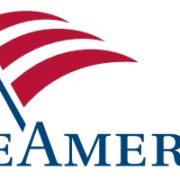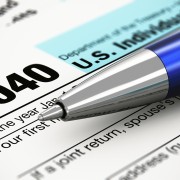SEP IRA – The Powerful Small Business Retirement Plan

Money Matters – Skloff Financial Group Question of the Month – October 1, 2020
SEP IRA – The Powerful Small Business Retirement Plan
By Aaron Skloff, AIF, CFA, MBA
Q: I am a sole proprietor earning $100,000 per year. My spouse owns a limited liability corporation (L.L.C.) and earns $400,000 per year. Is there a low cost, low maintenance retirement plan with generous contribution limits for our respective companies?
A: The Problem — Finding a Low Cost and Low Maintenance Retirement Plan with Generous Contributions Limits for Small Businesses
Many employer sponsored retirement plans require annual testing and annual tax filings. The testing, preparation and filings can be time consuming and costly. Furthermore, many employer sponsored retirement plans have modest contribution limits.
Are You Interested in Learning More?
The Solution —SEP IRA
Simplified Employee Pension Plans (SEP IRAs) provide self-employed individuals and small-business owners a low cost, low maintenance employer sponsored retirement plan with generous contributions limits and no employer tax filings.
Who Can Establish a SEP IRA and Who Can Contribute. It can be established by sole proprietors, partnerships, C corporations, S corporations. Even if you are also an employee of a company or university where you participate in their retirement plan (e.g.: 401(k) Plans or 403(b) and/or 457(b)), you can establish a SEP IRA for your own business. Contributions are solely funded with employer contributions.
Contribution Limits. SEP IRA contribution limits are based on net business profits, net of self-employment taxes. Contributions can vary each year between 0% and 25% of compensation with a maximum of $57,000 for 2020. The maximum compensation limit is $285,000 for 2020. Translation: even if you earn $1 million your employer cannot contribute more than $57,000 for 2020. Each employee must receive the same percentage from the employer. Based on a $100,000 profit net of self-employment taxes, your employer could contribute $18,587. Based on a $400,000 profit net of self-employment taxes, your spouse’s employer could contribute $57,000.
Vesting. With many employer sponsored retirement plans, employer contributions can be taken back by the employer if you do not remain employed by the employer for a certain number of years. After remaining with the employer for a number of years (five years as an example), you can keep your employer’s contributions – whether or not you stay with the employer. The process of being able to keep your employer’s contributions over time is called vesting. With a SEP IRA, employer contributions are immediately vested.
Establishment Deadline. The deadline to establish a SEP IRA for 2020 is April 15, 2021. With a filing extension, the deadline can be extended to October 15, 2021.
Withdrawals. Withdrawals can be taken at any time but are subject to 10% early withdrawal penalties if taken before the age of 59 ½. Like many retirement plans, SEP IRAs are subject to required minimum distributions (RMDs) starting at age 72.
Tax Domino Effect. Contributions to a SEP IRA reduce your taxable income. This can have a positive domino effect, avoiding or reducing capital gains and dividend taxes, and net investment income taxes. This can increase the probability of using itemized deductions.
Action Step — Establish a SEP IRA
Boost your retirement savings with a SEP IRA and gain tax benefits as you close your retirement savings gap. Don’t put off until tomorrow what you can do today.
Aaron Skloff, Accredited Investment Fiduciary (AIF), Chartered Financial Analyst (CFA), Master of Business Administration (MBA) is CEO of Skloff Financial Group, a Registered Investment Advisory firm specializing in financial planning, investment management and benefits for small to middle sized companies. He can be contacted at www.skloff.com or 908-464-3060.













